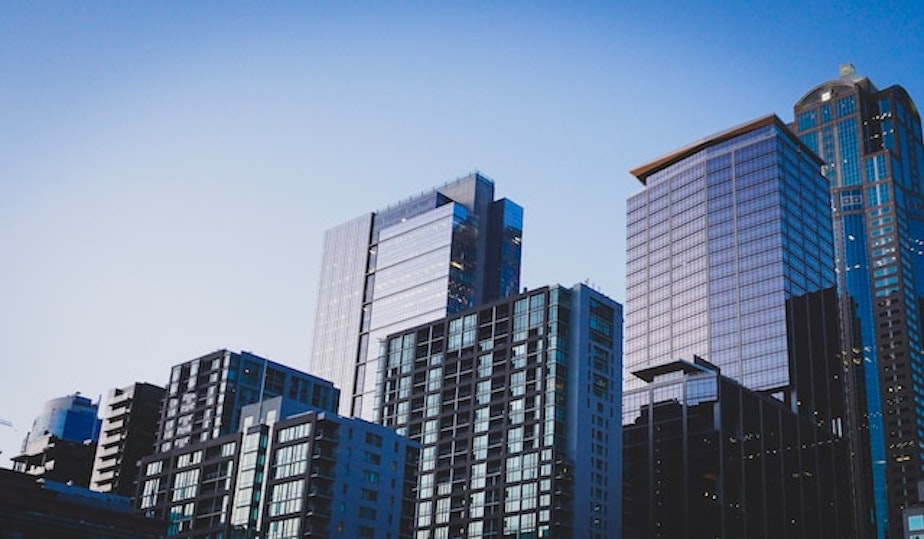What's behind Downtown Seattle's slow pandemic recovery?

Downtown Seattle is struggling to return to pre-pandemic form.
While certain areas of downtown are recovering more quickly, foot traffic across the city’s central business district is still way below pre-pandemic levels and office vacancy rates are double what they were in 2019.
According to Brookings Institute Fellow Tracy Hadden Loh, there are three primary drivers of Seattle's slow downtown recovery: perception of crime downtown, challenging commutes, and the variety of office buildings downtown.
Hadden Loh's team interviewed 100 stakeholders in New York, Chicago, Seattle, and Philadelphia, including residents, major employers, property owners, and small business owners.
Across all those cities and stakeholders, people said concerns about crime and general order in the public realm were a factor in whether they wanted to go downtown.
Property crime and violent crime went up during the pandemic across Seattle.
Sponsored
However, the share of crime downtown when compared to other neighborhoods is down.
"It might come as a surprise to the average person in the Seattle area if I say that, actually, the share of crime that happens in Downtown Seattle actually declined during the pandemic," Hadden Loh said.
There isn't a magic bullet to combat people's perceptions of crime, "but the research that [Hadden Loh] pointed me to traces the roots of violence and crime to economic inequality and lack of opportunity," said KUOW's growth and development reporter Joshua McNichols, "and these are systemic problems requiring a coordinated effort to address."
Perception of disorder is likely influenced by the number of people downtown and the visibility of disorder.
Another factor behind downtown's slow recovery is the long commute times to the city's center.
Sponsored
"Seattle has some of the longest commutes, like the median regional commute in Seattle is nine miles, which is higher than the median commute distance in the New York City metro area," Hadden Loh said.
Long commutes make telework more attractive. More housing in neighborhoods surrounding downtown could alleviate this issue by bringing people closer to downtown. Reliable transit, like light rail, also brings far-away neighborhoods and suburbs within a short commute of downtown.
The type of office space available also affects Downtown Seattle's recovery. Remote work has changed the way people work.
It's not that people don't want offices, "it's that they can consume fewer square feet of offices per worker. So, what they want are smaller, very high-quality, flexible spaces," Hadden Loh said. "In other words, they want a new kind of office that is different from the offices of the past."
There a few ways the city could make it easier to change how office buildings are used, but Hadden Loh said Seattle's economic diversity could help downtown. Manufacturing and research could use space vacated by tech companies during the pandemic.
Sponsored
"The question is, are we able to solve the other problems that would allow them to make that decision to move downtown?" McNichols said.






